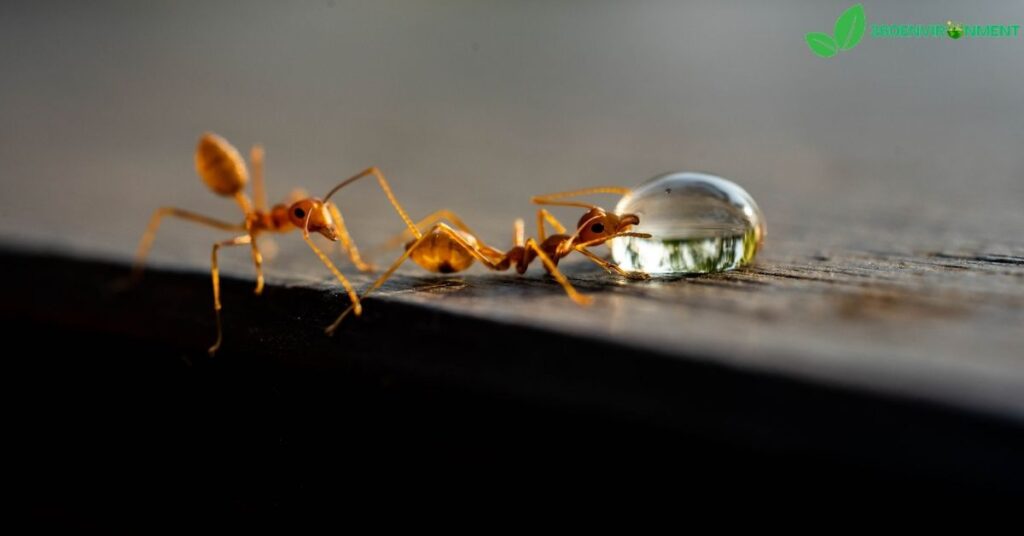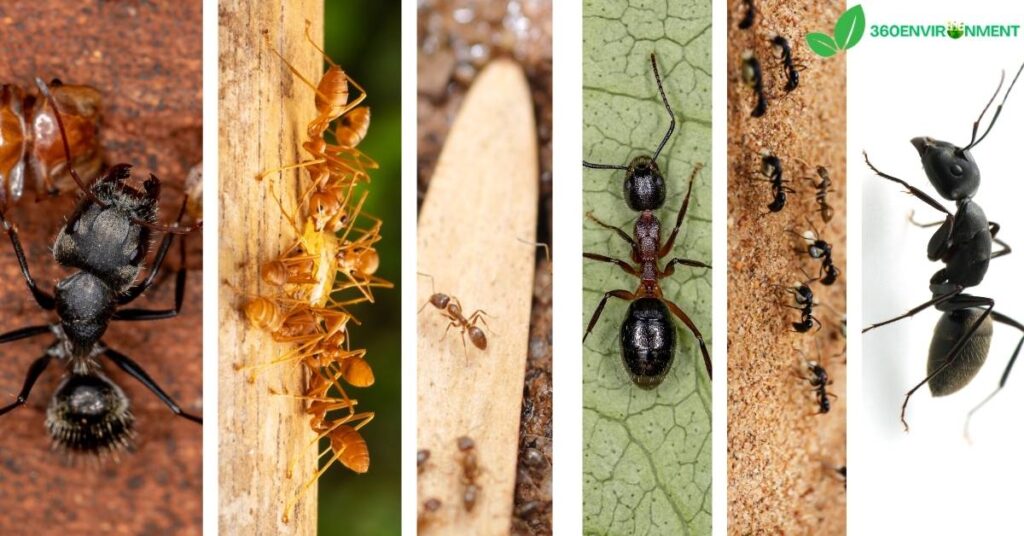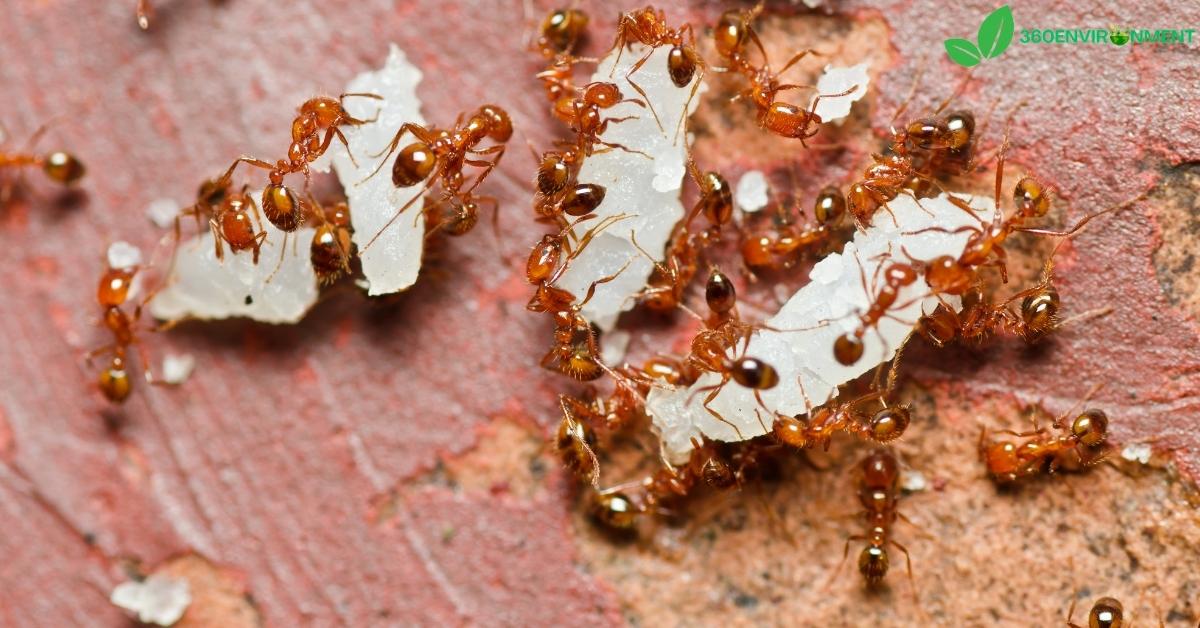Ants are a widespread and diverse insect group, contributing significantly to ecosystems worldwide. In Arkansas, ants play essential roles in maintaining soil health, controlling pests, and supporting local biodiversity. However, ants can also be problematic when they invade homes, gardens, or structures. This Arkansas ants identification guide will provide insights into identifying the most common ant species found in the state, focusing on their appearance, behaviors, and their impact on the environment.
Accurate ant identification is crucial for understanding their ecological roles and for implementing appropriate pest management strategies. The Arkansas ants identification guide serves as a comprehensive resource for anyone seeking to learn more about these important insects.
1. The Ecological Importance of Ants in Arkansas
Before delving into individual species, it’s crucial to understand the overarching roles that ants play in Arkansas. While some ants may be considered pests in human habitats, their overall contribution to the environment is invaluable. The Arkansas ants identification guide emphasizes the critical roles ants play in maintaining healthy ecosystems throughout the state.

1.1. Ants and Soil Health
Ants are often referred to as nature’s engineers due to their ability to aerate soil and enhance its structure. By digging intricate tunnel systems, ants improve water infiltration and oxygen distribution, which benefits plant growth. This action enhances the fertility of the soil, making it more conducive for plant roots to grow and thrive. In this Arkansas ants identification guide, we highlight how essential these activities are for soil health.
1.2. Natural Pest Control
Ants also act as natural pest controllers by preying on smaller insects, including caterpillars, aphids, and other potential crop destroyers. In many cases, ants help reduce the populations of harmful pests, thus decreasing the need for chemical pesticides in both agricultural and garden settings. This Arkansas ants identification guide includes information on how certain species, like the odorous house ant, contribute to pest control.
2. Arkansas Ants Identification Guide: Common Species
Arkansas is home to a wide variety of ant species, each with unique traits and behaviors. The following section provides a detailed overview of the most common ants found in the state, helping you accurately identify them and understand their environmental significance. The Arkansas ants identification guide will assist you in recognizing these species in both urban and natural settings.

2.1. Carpenter Ants (Camponotus spp.)
One of the largest ant species in Arkansas, Carpenter ants are notable for their wood-boring habits. While they do not consume wood as termites do, they excavate galleries in damp or decayed wood to build their nests, often causing structural damage in homes. This Arkansas ants identification guide highlights their significance both in nature and as household pests.
Characteristics:
- Size: Large, ranging from 1/4 to 1/2 inch in length.
- Color: Black or a combination of black and red.
- Habitat: Prefers nesting in moist wood, particularly in dead trees or wooden structures like homes.
Identification Tips:
- Carpenter ants are often spotted around doors, windows, or areas of the home with moisture problems.
- Look for sawdust-like debris near wooden structures, which could indicate a carpenter ant infestation.
Environmental Role:
Carpenter ants are decomposers in forest ecosystems, breaking down dead wood and returning nutrients to the soil. However, they become problematic when they nest inside homes, causing damage to wooden beams and support structures. This Arkansas ants identification guide provides essential information on how to identify and manage carpenter ants.
2.2. Red Imported Fire Ants (Solenopsis invicta)
Red imported fire ants are an invasive species known for their aggressive nature and painful stings. These ants build large mounds and fiercely defend their colonies when disturbed. Fire ants pose a risk to both humans and wildlife due to their venomous stings, making them a key focus of this Arkansas ants identification guide.
Characteristics:
- Size: Small, about 1/8 to 1/4 inch long.
- Color: Reddish-brown with a darker abdomen.
- Habitat: Builds large mounds in open areas such as lawns, pastures, and parks.
Identification Tips:
- Fire ant mounds are typically large and dome-shaped. When the mound is disturbed, fire ants swarm aggressively.
- Their stings cause a burning sensation, followed by painful welts.
Environmental Impact:
Fire ants are aggressive competitors, often displacing native ant species and disrupting local ecosystems. They prey on young wildlife and can damage agricultural crops. This invasive species requires careful management to prevent further ecological harm, as emphasized in this Arkansas ants identification guide.
2.3. Argentine Ants (Linepithema humile)
Argentine ants are another invasive species that have become established in Arkansas. These ants form massive colonies and are highly adaptable to various environments. Argentine ants are a significant pest in urban areas, as they often invade homes and businesses in search of food. Their identification and behavior are key points in this Arkansas ants identification guide.
Characteristics:
- Size: Small, about 1/8 inch long.
- Color: Light to dark brown.
- Habitat: Found near moist areas, particularly around homes, gardens, and food sources.
Identification Tips:
- Argentine ants move in distinctive trails, often traveling long distances to forage.
- These ants prefer sweet foods but will also eat proteins such as meat.
Environmental Impact:
Argentine ants often displace native ant species, reducing local biodiversity. Their presence in homes can be a nuisance, and they can also disrupt natural food webs by outcompeting other species for resources. This Arkansas ants identification guide highlights the ecological concerns related to Argentine ants.
2.4. Odorous House Ants (Tapinoma sessile)
Odorous house ants are one of the most common ants found inside homes in Arkansas. Named for the strong, rotten coconut smell they emit when crushed, these ants are typically harmless but can be bothersome due to their large colonies and constant search for food. This Arkansas ants identification guide includes details on their identification and habits.

Characteristics:
- Size: Small, about 1/16 to 1/8 inch long.
- Color: Dark brown to black.
- Habitat: Typically found indoors in kitchens, pantries, and near food sources.
Identification Tips:
- Odorous house ants form long foraging trails and are often seen in large numbers.
- Crushing an odorous house ant releases a distinct foul smell.
Environmental Role:
Odorous house ants feed on sugary substances, such as honeydew produced by aphids, making them beneficial in controlling aphid populations. However, their tendency to invade homes in search of food can make them a significant household pest, as described in this Arkansas ants identification guide.
2.5. Pavement Ants (Tetramorium immigrans)
As their name suggests, pavement ants are commonly found nesting in cracks in sidewalks, driveways, and building foundations. These ants are small and non-aggressive, though they can be a nuisance when they enter homes. This Arkansas ants identification guide helps you recognize and manage these common urban ants.
Characteristics:
- Size: About 1/8 inch long.
- Color: Dark brown to black.
- Habitat: Found in paved areas, lawns, and garden beds.
Identification Tips:
- Pavement ants form visible foraging trails, especially around cracks in pavement and foundations.
- These ants prefer sweet and greasy foods and are often seen in kitchens.
Environmental Role:
Pavement ants contribute to the breakdown of organic material and aerate the soil through their tunneling activities. In urban environments, they are most commonly found as household pests but pose no significant ecological threat, according to this Arkansas ants identification guide.
2.6. Little Black Ants (Monomorium minimum)
Little black ants are tiny but can form massive colonies, often invading homes in search of food. These ants are commonly found in kitchens, pantries, and bathrooms, where they forage for crumbs, sweets, and other food sources. The Arkansas ants identification guide provides useful tips for identifying and managing these small but persistent pests.
Characteristics:
- Size: Very small, about 1/16 inch long.
- Color: Black.
- Habitat: Nests in soil, under rocks, and inside walls. They are often found indoors near food sources.
Identification Tips:
- Little black ants form long trails and often invade homes in large numbers.
- They are attracted to both sweet and greasy foods, making them frequent visitors to kitchens.
Environmental Role:
Little black ants are beneficial for ecosystems as they help control small insect populations and decompose organic material. However, they become a nuisance when they invade homes in large numbers, which this Arkansas ants identification guide discusses in depth.
3. Managing Ant Infestations in Arkansas
While ants contribute positively to ecosystems, they can become problematic when they invade homes or gardens. Understanding the behavior and nesting preferences of different species is critical for effective ant management. The Arkansas ants identification guide offers strategies for managing ant populations in a sustainable and effective manner.

Conclusion
This Arkansas ants identification guide provides detailed information on the most common ant species found in the state, highlighting their appearance, behavior, and ecological roles. Ants are an integral part of Arkansas’s ecosystems, but they can also become pests when they invade homes or other human environments. Understanding the differences between ant species is crucial for implementing effective pest management strategies and for appreciating the vital roles ants play in maintaining a healthy environment.

